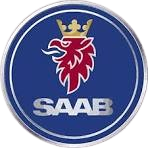New & Used Saab Parts & Spares
FIND CHEAP SAAB CAR PARTS HERE

This car manufacturer began in Sweden back in 1945 and remains a familiar name on roads today. Keep your Saab running for years to come with new and used Saab parts available through RFDAuto.
The iconic Saab 900 hit the market in 1978, followed by the Saab 9000 in the mid-1980s. We source Saab parts for all models, including the sleek compact executive 9-3 and the roomy 9-5. Simply enter your requirements online, and our suppliers will quickly respond with all the information you need about your Saab spares.
At RFDAuto, you can find everything from alternators and axles to windscreens and wing mirrors. Working with breakers across the UK, we ensure you have access to a wide range of Saab components.
Once you’ve selected the part that suits your needs, our suppliers deliver it directly to your door – offering a cost-effective and hassle-free way to maintain your Saab.
About Saab Cars
Saab AB, a Swedish aerospace company, was established in 1937 in the town of Linköping. Initially, the company focused on building aircraft for the Swedish Air Force. However, as the war ended and the market for military planes declined, Saab sought new opportunities and began an automotive design project in 1945, known as Project 92. The project later moved to Trollhättan, where Saab remained due to the better-equipped facilities for car assembly. Saab AB produced four prototypes before officially launching the Saab 92 in 1949.
In 1960, Saab introduced the third iteration of the 92, becoming the first model widely exported outside Sweden, with nearly 550,000 units sold. The launch of the Saab 99 in 1968 set the stage for decades of Saab design, featuring innovations like a wraparound windscreen and headlamp washers.
In 1978, Saab partnered with Fiat to sell the rebadged Delta as the Saab 600 under a joint platform. This collaboration led to the 1985 production of the Saab 9000, Fiat Croma, and Lancia Thema. The 9000, Saab’s first luxury car, unfortunately, struggled to gain traction in the market.
Also in 1978, Saab replaced the 99 with the iconic Saab 900, producing over one million units. It became Saab’s best-selling and most recognizable model, followed by the introduction of a soft convertible version in 1986.
By 1989, Saab-Scania became an independent company, Saab Automobile AB, headquartered in Sweden. General Motors (GM) acquired a controlling interest and launched a new 900 in 1994, built on the Opel Vectra platform. While the model was profitable in 1995, it did not achieve the same cult following as its predecessor.
In 1997, Saab introduced the 9-5, replacing the 9000. It marked the first Saab without a combi-coupe body in almost 20 years. GM purchased Saab’s remaining shares in 2000 and debuted the all-new 9-3 in 2003. This sports sedan offered a more traditional four-door design and was co-developed with the Opel Astra.
Saab launched the 9-2X and 9-7X in the U.S. market in 2005, but both models were commercial failures and were discontinued a few years later. Production delays and cancellations, such as the 9-3 wagon and a 9-5 replacement, further hampered the brand. GM also announced plans to shift production to Opel’s Russelsheim plant.
In 2010, GM confirmed that Spyker would take over Saab. While GM continued supplying engines, Spyker Cars N.V. agreed to acquire the Saab brand.
